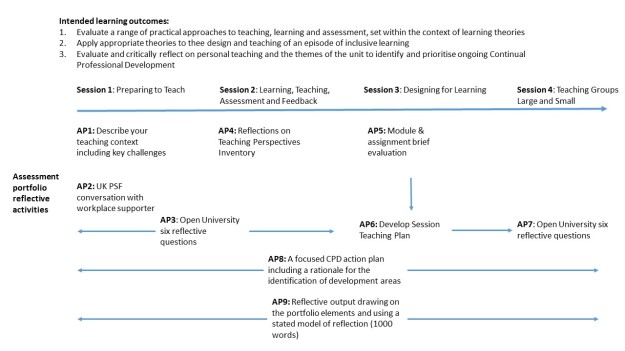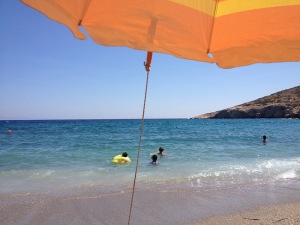On the core unit of our PGCert in Learning and Teaching in Higher Education at MMU we have been thinking about the pedagogical theories that we use with out students with the aim of getting broader representation. With this in mind, I have been reading a paper by Dr Paora Stucki (A Māori Pedagogy: Weaving The Strands Together) which is a combination of literature review with first hand interviews of some Māori teachers. The paper considers pedagogy along 5 strands as “fundamentally grounded within its parent culture”, a result of the ever changing socio-political and cultural context (strand 1). He explains this using the metaphor the forest of Tane (the Māori god of forests and birds) where “learning theories (strand 2) are the ground of the forest and the other four aspects of pedagogy are trees within it.”, these four aspects being: teaching and learning methods (strand 3); curriculum content (strand 4); teacher behaviours and characteristics (strand 5); and the context and organisation of teaching (strand 6).
Strand 1: socio-political and cultural context
Stucki identifies well developed characteristics of Māori society and culture as of importance in what and how things should be taught. This includes concepts such as truth (pono), power (mana) love and compassion (aroha) and inherited constraints (tapu) and means by which constraints can be released. Tribal history and artifacts are also important, as are extended family bonds and lineages (whānau and whakapapa), and land (whenau). This rich tapestry of concepts come together to form a way of thinking about the world that is “continuous, dynamic and evolving (Roberts & Wills, 1998)”, including the impact of colonisation with institutions that seek to redress the negative outcomes through promoting agency to overcome barriers having a significant impact on pedagogy. A final interesting point made is that “The truthfulness of a statement is ascertained using the criteria of reasonableness, precedent, experience (Roberts & Wills 1998)”.
Strand 2: learning theories
Not surprisingly, this strand identifies the importance of caring relationships between teachers and learners. Clear connections can be seen between this approach and one of Relational Pedagogy that “takes seriously questions of trust, recognition and respect which lie at the heart of the student’s experience” (Murphy and Brown, 2012, p 633). However, Stucki takes this further making the assertion that this goes beyond teaching and is related to the fundamentals of who we are “socially, politically, spiritually and culturally”.
Strand 3: teaching and learning methods
Building on the point above, methods that take account of the importance of relationships: teachers-learners and learner-learner are central to teaching designs based on the metaphor of family (whanau). This implies mixed age and ability classes, collaboration & cooperation, active hands-on learning, and co-constructing as the basis of lessons, and above all a learner centred, personalised approach. Similar pointers are often drawn from Community of Practice (Lave and Wenger 1999) learning theory when applied to formal learning settings where at times everyone is at times a teacher and everyone learns. There are parallels her with Vygotsky’s Social Constructivism and his key concepts of the more knowledgeable other (MKO) and the Zone of Proximal Development (ZPD). However, an additional layer is the spiritual where wider aspects of well-being need to be considered. In addition, concepts of reflection feature heavily as they do I many teaching and learning contexts.
Strand 4: curriculum content
Stucki identifies the importance of having culturally representative curricula, as opposed to an imposed curriculum and the impact that can have on society at large as one world view is privileged over others. For him the key question is not what curriculum but who is in control of what to include and what to leave out. Although not touched upon by Stucki, the Internet, with concepts like ‘fake news’ and the ability of anyone to share ‘knowledge’ has further complicated the notion of control over curriculum in the broader sense.
Strand 5: teacher behaviours and characteristics
Tiakiwai & Richardson (2003) outlined 6 dimensions of the effective teacher:
- Manaakitanga: They care for the students as culturally-located human beings above all else.
- Mana motuhake: They care for the performance of their students.
- Ngā tūranga [sic] takitahi me ngā mana whakahaere: They are able to create a secure, well-managed learning environment.
- Wānanga: They are able to engage in effective teaching interactions with Māori students as Māori.
- Ako: They can use strategies that promote effective teaching interactions and relationships with their learners.
- Kotahitanga: They promote, monitor and reflect on outcomes that in turn lead to improvements in educational achievement for Māori students (Bishop et al., 2003, p. 108).
A westernised characteristaion of this would be student centred learning, linked to the ideas of Carl Rogers core conditions for education.
Strand 6: context and organisation of teaching
There was little specific in strand 6 that would be other than what would be expected by way of a learning environment conducive to learning. Important aspects were that it reflected Māori in terms of artifacts but also that it was a safe environment.
Conclusions
The paper is summarised by Stucki’s diagram below. As he states, it isn’t key concepts unique to Māori pedagogy that are significant, but what is important is the interconnected nature of the concepts and ideas and how they work together to support and nourish Māori culture and society.
For me, this ‘systems’ view of learning and teaching is the key message and in reading this paper I have had time to take a step back and think again over some of the ideas, concepts, theories that form part of my own pedagogy in practice.









